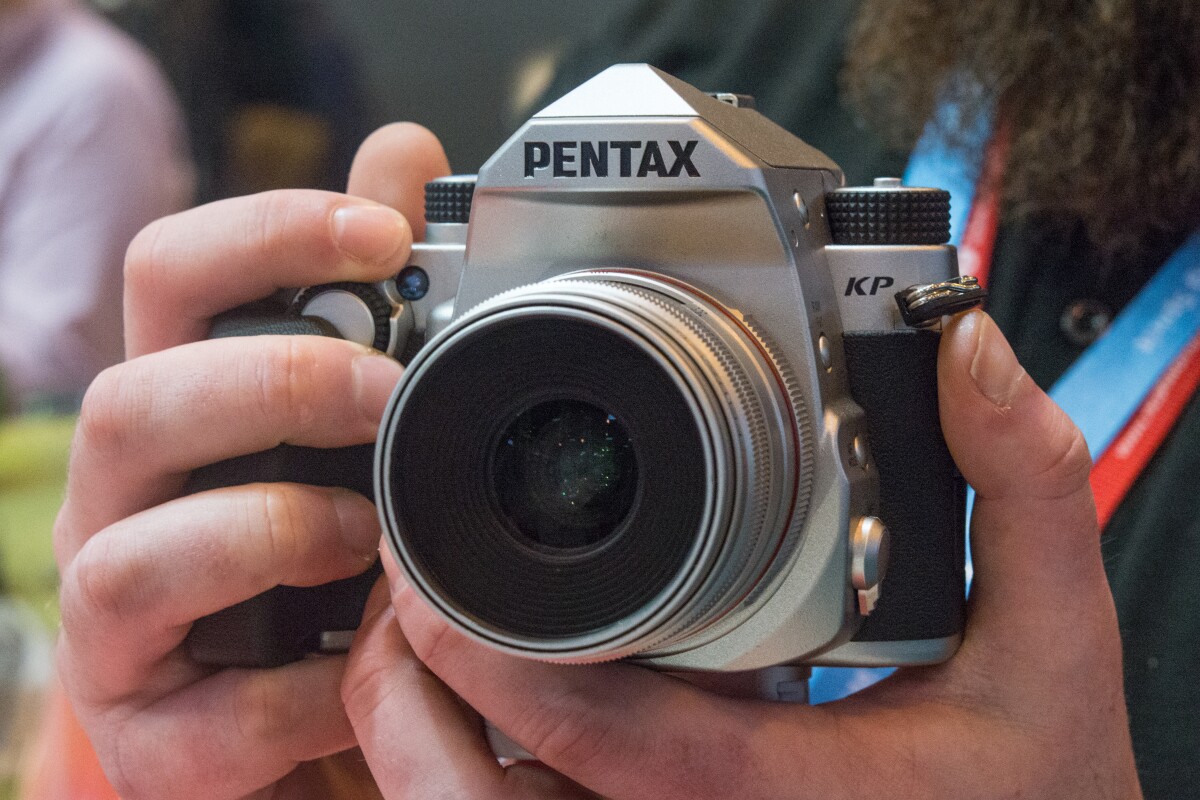When Pentax announced the compact KP DSLR earlier this year, we were intrigued by the image stabilization and almost ridiculously high ISO settings it offers, along with its interchangeable grips. So, when we recently got the chance to try the new shooter at The Photography Show in Birmingham, UK, we were keen to see if the camera could live up to its spec sheet. Read on to see how we got on.
The Pentax KP is a sibling to the full-frame K-1 and APS-C K-3 II flagships, and uses much of the technology we saw launched in those cameras. The new DSLR features a 24-megapixel APS-C sensor, built-in shake reduction with 5-axis image stabilization and ISO settings which reach all the way up to 819,200.

However, the first thing we noticed about the KP when we had it in our hands was just how compact it seems. We say "seems" because the dimensions of the KP are pretty-much the same as the K-3 II, but it feels a lot smaller. Given it also offers the sort of weather sealing and ruggedness normally only found in larger and higher-end models, the compact feel of the camera is quite surprising.
Pentax is obviously proud of how it managed to cram so much tech inside the camera too, there was a transparent model of the KP on display at The Photography Show to help show this, along with one which had been sliced in half (in that way camera manufacturers like to do) which you can see in our gallery.

It's reasonably lightweight too, weighing in at 703 g (27 oz) without a lens attached. Style-wise the camera is very-much designed to look like traditional Pentax SLRs, and features the retro triangular viewfinder hump. Given this, we thought the silver version looked better than the black option, especially when it had matching lenses mounted.
One of the features which is integral to making the KP feel more compact than it rightly should is the use of interchangeable grips. These bundled accessories simply attach to a mount on the front of the camera using a hex wrench and come in three sizes (small, medium and large). This allows users to swap grip depending on what and how they're shooting.

For example a user might opt for the small grip if using a small prime lens and wanting to keep the camera as small and portable as possible, but go with the largest grip (pictured above) to improve handling if shooting with a larger lens. This option might seem like a little thing, but we were surprised how much it changed the fell of the camera during use.
As we've come to expect from Pentax cameras, there's a good range of physical and customizable controls on the KP. Despite the compact nature of the camera these don't feel too cramped when shooting with it. Our one physical disappointment with the camera is that the tilting rear monitor doesn't use the same impressive four leg mount as the K1, instead it feels like any other DSLR.

When it came to shooting with the KP, Pentax had set up a model railway at the show for booth visitors to test the cameras with, which was proving surprisingly popular. We guess there must be quite an overlap of those who like cameras and model railways. It should be noted we weren't able to keep any of our shots, so our observations are based on what we could see on the rear of the camera. We also didn't shoot any video.
After taking a couple of shots with the KP, we instantly realized that the AF system is much-improved over previous equivalent Pentax DSLR. It now has 27-points, like the K-3 II, though as we observed when we reviewed that camera, Pentax is still arguably lagging behind Nikon and Canon when it comes to autofocus speed and customizability.
However, the 5-axis sensor-shift shake reduction offers something that cameras from those manufacturers can't, built-in image stabilization which doesn't rely on optically-stabilized lenses. In our quick tests this lived up to the promise of offering much improved shake reduction, and we were pleasantly surprised by the shutter speeds we were suddenly able to hand-hold and still get sharp images.

While we won't go into too much detail about image quality, as we were using the rear monitor to review them rather than doing it properly on a computer, they looked as expected for a camera of this level. They seemed about on par with what we've seen from the K-3 II. The one aspect of image quality we did want to test was the high ISO settings of the camera.
Dialing the ISO right the way up to 819,200 gave exactly the sort of noisy and reduced color image you would expect, and as such will only really be of use in low-light emergencies where getting a low quality image is still better than getting no image at all. However, at more moderate ISO settings such as 6,400, which would still be considered high by conventional standards, the KP performed well given its APS-C size sensor.

Overall the Pentax KP looks to be a good quality DSLR for its price-point, and offers features that equivalently-priced models from Canon or Nikon can't, namely the weather sealing and built-in image stabilization. The retro-style design and the ability to swap grips will also make the camera more appealing to some users, possibly even some who would otherwise be considering mirrorless cameras.
The Pentax KP DSLR is available now priced at US$1,100 body-only.
Product page: Pentax KP

















